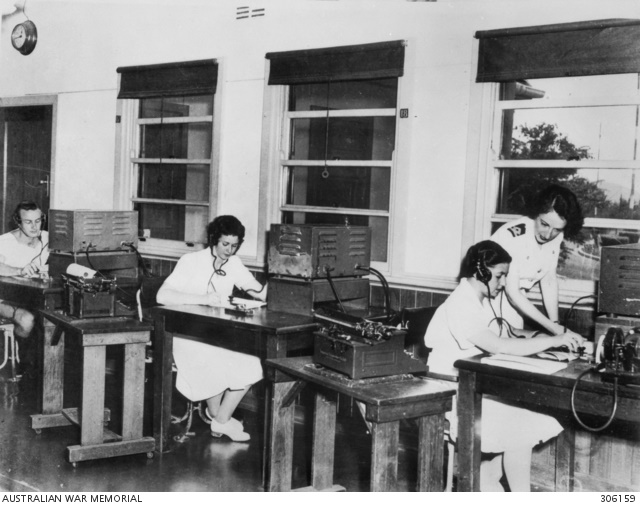
The Women’s Royal Australian Naval Service (WRANS) was formed in 1941, and entered into the realm of communications, including signals intelligence, in 1941. The establishment of the WRANS was due to the efforts of Australia’s first female electrical engineer, Florence Violet McKenzie OBE (otherwise known as Mrs Mac), and those of naval Commander Jack Newman (Navy’s Assistant Director of Signals) to bolster the number of qualified radio operators available to the Navy. Mrs Mac formed the voluntary civilian Women’s Emergency Signalling Corps (WESC) in 1939, aiming to train female wireless telegraphists that would not only replace men in civilian roles but could ultimately serve in the forces. As these women rose through the ranks of WESC, the scope of the school expanded and the women began to train prospective Australian servicemen. By August 1945, WESC had trained some 12,000 men in Morse code, visual signalling and international code.
Mrs Mac did not give up on her vision of serving female telegraphists, and after ongoing resistance from the Advisory War Council to accepting women telegraphists in the Royal Australian Air Force, McKenzie persuaded the Australian Commonwealth Naval Board to accept 14 female operators in 1941. These women were the first in the newly-formed WRANS and served at HMAS Harman, just outside of Canberra.
Some of the WRANS at Harman carried out communications services for Allied ships in the Pacific region, providing radio coverage of the Pacific Ocean during the war. They formed part of a world-wide communications network, supporting the Commonwealth and its allies. Others conducted signals intelligence duties for Fleet Radio Unit Melbourne (FRUMEL). In order to carry out these duties, telegraphists monitored radio airwaves 24 hours a day to listen for messages from Allied naval craft, and for those involved in signals intelligence, messages from the Imperial Japanese Navy. This means that members of the WRANS worked in shifts to ensure they never missed a message. All were sworn to secrecy about their work, as the information they handled included highly sensitive information, both of a signals intelligence nature, as well as information concerning Allied naval shipping, the composition of convoys, port facilities and merchant shipping.
Communications at Harman involved the keying (typing) of either encrypted or plain language messages, for forwarding by landline to the Belconnen Naval Transmitting Station (known as ‘Bells’). Harman’s communications facilities formed the most powerful naval wireless base in the British Empire, and the largest naval or commercial station in the southern hemisphere.
*Click on the thumbnails below to view full-size images.



